Artificial selection happens when people select individuals to mate that have features they hope the offspring will inherit. This is also called selective breeding.
Humans select for the traits they like and breed just those.
Ex. Wild Mustard – different traits being selected for led to many different vegetables!
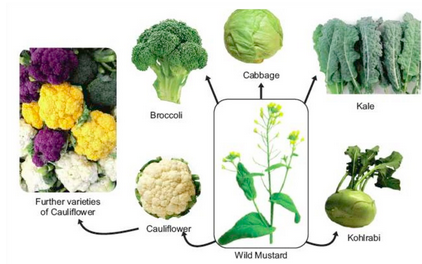
Evidence of Evolution:
Evolution is the process by which populations of living things change over a series of generations.
- It is not about an individual’s changes or developments.
- It cannot be seen in the life on an individual.
Microevolution – Microevolution happens on a small scale (within a single population)
- Changes in DNA (Mutation)
- Natural Selection
Macroevolution – Macroevolution generally refers to evolution above the species level. So instead of looking at changes of one amphibian species, we look at the entire Class Amphibia and the trends we see within the group and even how it fits in.
- Speciation
- Divergent Evolution
- Convergent Evolution
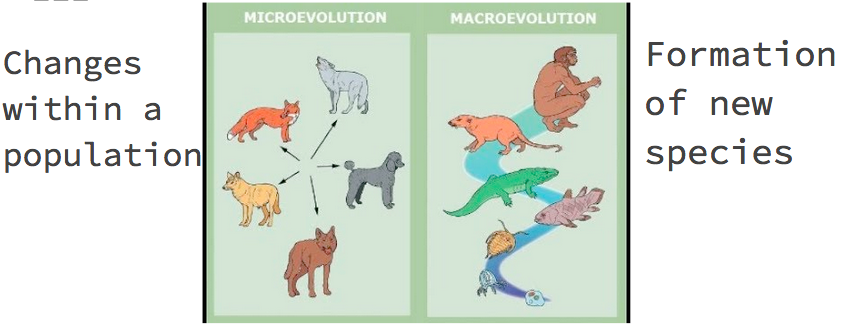
So What is the Evidence?
We will briefly look at five forms of evidence of evolution:
- Ancient Organism Remains
- Fossil Layers
- Similarities among organisms today
- Similarities in DNA
- Similarities in embryology
1. Fossils and Ancient Organism Remains
Fossils provide a direct evidence of a pathway taken by living organisms in their history.
- Many fossils represent species that have gone extinct
- These fossils are transitional between fossils found from an earlier time and present day.
2.Fossil Layers and Geographical Time
Most fossils are found in sedimentary rock.
- There is a gradual formation of sedimentary rock over time.
- Steady accumulation of fossilized organisms.
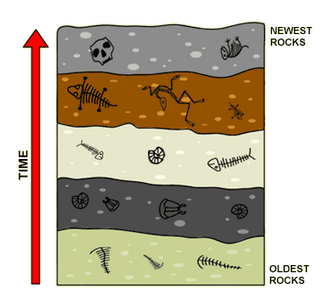
- The deeper the fossil is found, the older the organism likely is.
- We can now date fossils through the geological time scale and carbon dating.
3. Similarities Among Organisms Today
If two or more species share a unique physical feature, such as a complex bone structure or a body plan, they may all have inherited this from a common ancestor.
- Homologous structures: Physical features shared due to evolutionary history (a common ancestor).
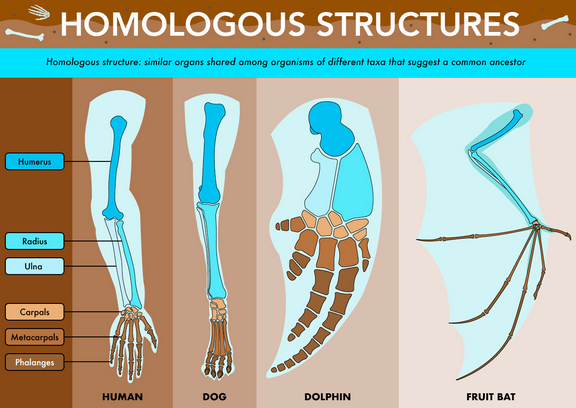
Likewise, we see very different organisms having similar external features in similar environments. This shows they are adapting to the external environment. (More on this next week!)
- Analogous structures: structures in different species having the same function but have evolved separately, thus do not share common ancestor. (Ex. Fins in mammals and fish!)
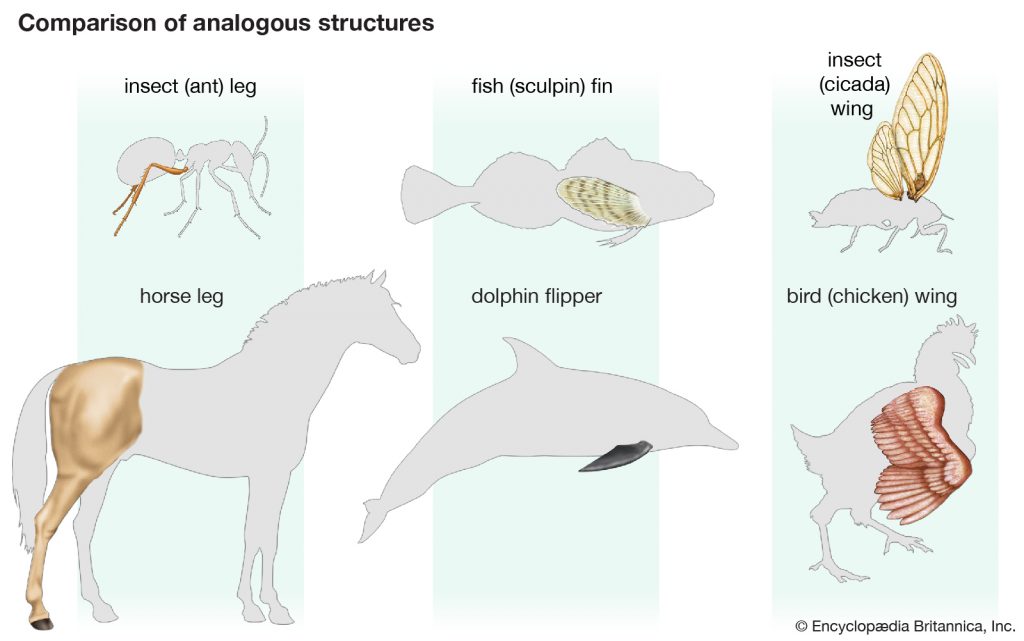
4. Similarities in DNA
Observing physical features is not the best way to determine the evolutionary relationships between organisms.
- All living things have DNA
- Scientists now can sequence the genome of organisms (get the entire DNA code) and compare species.
- Since evolution is based on changes in DNA, we can see how the DNA has changed and to what extent.
- This reveals much deeper relationships.
5. Similarities in Embryology
Embryology is the study of organisms in the early stages of development.
- During the 1800s, scientists noticed that you could not identify the early embryos of vertebrates without labeling..
- Similarities can be observed in the beginning, simple stages of animal development.
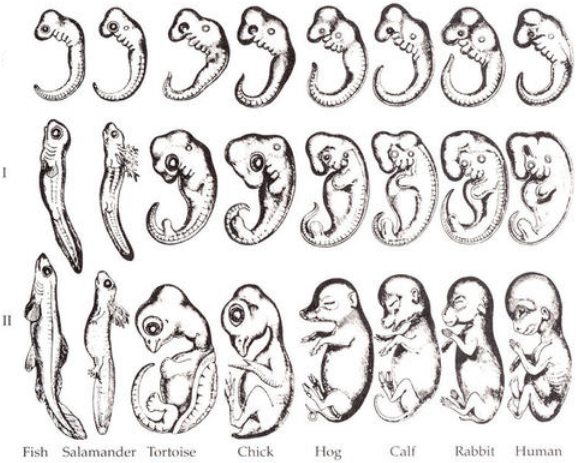
Case Study: Transitional Fossils – The Origin of Tetrapods
It is a common misconception that evolution “jumps” dramatically between groups. Many think evolution went from fish -> amphibian, chimpanzee -> human, dinosaur -> bird directly. This is not true.
- Ex. Fish and amphibians – this change took millions of years with many, many classes and species in between that are now extinct.
- Evolution is slow and gradual. We have to look at the fossils between the groups that are alive today.
Go through the click and learn and answer the questions on the worksheet.
Tetrapod = four-limbed vertebrate (Amphibians, reptiles, birds, mammals)
Comments by shaun pletsch